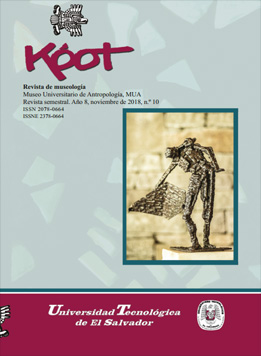The cumpas of the Cordillera San Lucas Cuisnahuát and San Cristóbal de Jayaque
Published 2019 - 01 -31
Keywords
- Religiosity,
- Indigenous people,
- Culture,
- Cultural identity
Copyright (c) 2019 Kóot

This work is licensed under a Creative Commons Attribution-NonCommercial-ShareAlike 4.0 International License.
How to Cite
Abstract
A flood gave meaning to the tradition of los cumpas; the brotherhood of two towns embraced their saints and their communities, which originally served to shelter those who had suffered the overflowing of the river. It was the perfect excuse for the introduction of a religious element: the saints became compadres- -pals-- in such a way that they committed each other to visit every year in order to keep the tradition alive
It is worth asking ourselves if the syncretism adopted in the traditional ritual is the result of the original visits between the indigenous peoples and their communities-- an ancient practice from long before the arrival and evangelization of the Spanish conquerors. During the journey between San Lucas and San Cristóbal, which ends with the meeting of the cumpas, you can find an exchange of presents, fraternization, a dance, chicha--alcoholic drink made from fermented corn-- and moonshine. After a few months of celebration, the way back begins. Since the encounter between the two saints also serves the purpose of entertaining, dancing and drinking, the institutional church prefers to assume that it is only interested in the solemn religious act thus ignoring the popular celebration.
Keywords: Religiosity, Indigenous people, Culture, Cultural identity, Compadres.
DOI: http://doi.org/10.5377/koot.v0i10.6704
URI: http://hdl.handle.net/11298/790
